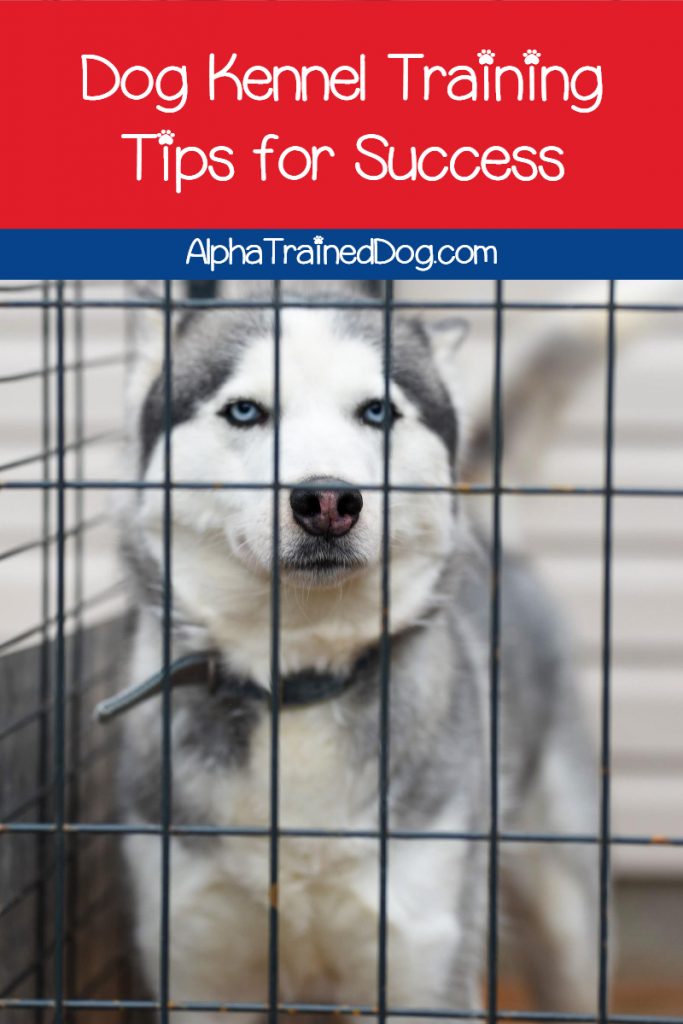Feeling overwhelmed with dog kennel training?
Don’t worry, we’ve got some great tips for success!
Whether you’re crate training a German shepherd puppy or a chihuahua, these will help you get started.
Let’s take a look!

Dog Kennel Training Tips for Success
There’s a bit of controversy around dog kennel training. Many feel that cages, crates, and kennels are cruel.
Oddly, there’s more controversy around it than around choke and electric collars. Things that make you go hmmm, right?
However, if used correctly, kennels can be a wonderful source of comfort to your dog. Think of it more like a doggy den!
Many dogs love having their own space to retreat to when they just need some quiet time.
We’ve all seen pictures of dogs curled up in washing baskets, drawers, and other strange places.
If only they had a crate…and a human who knew how to train them to love it!
Without further ado, let’s get to those dog kennel training tips I promised!
Never use it for punishment
First things first, when crate training your dog, you need to make sure you don’t ever (ever, ever, ever) use the kennel as punishment.
Remember, you’re trying to create positive associations, not negative.
No longer than four hours at a time
Also, avoid leaving your dog in the crate for more than four hours.
They need to get out and stretch a bit (and use the potty).
Think about how you feel when you’re cramped up in, say, a car for a long ride. Do you go more than four hours without getting out?
Leaving your dog in the crate too long can actually lead to anxiety.
If you have to work full time, hire someone to go let them out in the middle of the day (or go home if you live close enough).
Know why you’re using a kennel
Why do you want to try dog kennel training?
Does Fido chew everything when you’re gone? Pee all over the house? Bark excessively at company?
Knowing why you need a kennel can help you decide when to use it.
For chewing problems chew toys should be available in the kennel- and just the kennel. That will help him understand that he can only chew those items.
For housebreaking, you’ll have a bit more of a challenge.
Dogs won’t go where they sleep, so you have to make sure you’re taking him out often enough to do his business.
You don’t want him to hold it, as that can lead to problems like bladder infections and such.
You also don’t want him to get so desperate that he just goes in his crate.
That’s why the four-hour rule is so important. Although with puppies you’ll have to be even more diligent in letting them out throughout the day.
Give it your full attention
At first, you’ll have to really spend a good amount of time on your dog kennel training.
You can’t just pop your pup in a crate and call it a day.
So, don’t start until you know you can dedicate a few days to it.
Teach him that the crate is a safe space just for him! Make it cozy and reward him when he even shows interest in it at first.
Within a few days, he’ll understand that it’s his special den and not a cage. Just be patient!
You may think crating up a dog is cruel but in truth it’s not.
Remember, when we were small, our parents “crate trained” us! Seriously, what do you think that playpen was for?
Just remember, your dog shouldn’t spend his whole life in a crate. It’s useful for those times when you have to go to work or to the store. When you get home, let him free. Leave the door open, though. You may find that he loves spending time in there away from all the noise of the family.



We never had to kennel train our dogs, but I know a number of people that have found it helpful.
I have also never had a kennel when raising my dogs and we have always had pets throughout my entire life. I do know people that use them as they are super helpful and I appreciate the tips and benefits shared. Thank you!
There are some really good hints and tips here for sure. It is so important that Dogs and animals in general are made to feel comfortable x
My dog love training and session makes him so happy. Glad to learn so many interesting facts here.
My Bichon loves his crate. This is the only way he like to sleep and he is quite a character. When he is ready for bed at night he goes in and gives us side eye until we leave the room.
I don’t have a dog unfortunately, but I adore them! These are some fantastic kennel training tips for trainers.